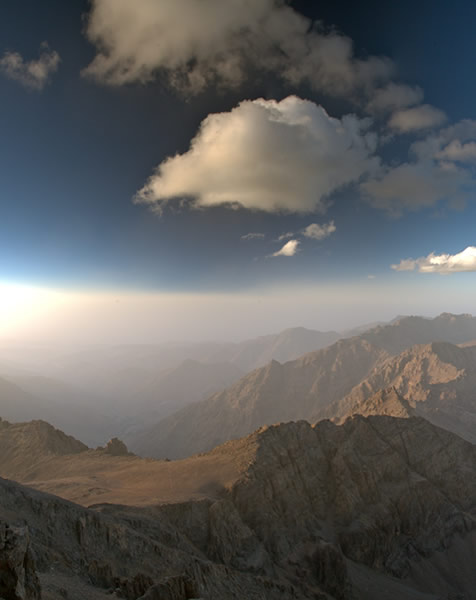Atmospheric
Optics
Mount Toubkal Shadow
Panorama by Arnaud Besancon (photography) from near the summit of the 4167m high Moroccan mountain. A ghostly triangular shadow bisects the scene. The wide sky is alternately light and dark. Scroll right for the large view.
Image ©Arnaud Besancon, shown with permission
A polarizing filter was used. Blue sky is most strongly polarized 90° from the sun. This shows in the panorama as dark regions 90° each side of the antisolar point marked by the tip of the mountain shadow.
Imagine a giant cube, 4 miles on each side, sat on the Earth and casting a shadow.
The shadow retains a square cross section for perhaps a hundred miles.
Now stand on the top of the cube and look along the shadowed air. It will disappear to a point and the shadow looks triangular.
Hang partly down one side to see an upward shadow spike.
The mountain, lit by a low sun, casts its shadow for tens of miles through the hazy air. The peak, the highest of the Atlas range, is certainly not triangular yet its shadow is almost perfectly so.
We are not seeing a shadow projected onto some distant screen or object. We are instead looking along the long column of unlit air from just inside its upper edge. The column disappears to a point just as a road or railway tracks do so in the far distance.









